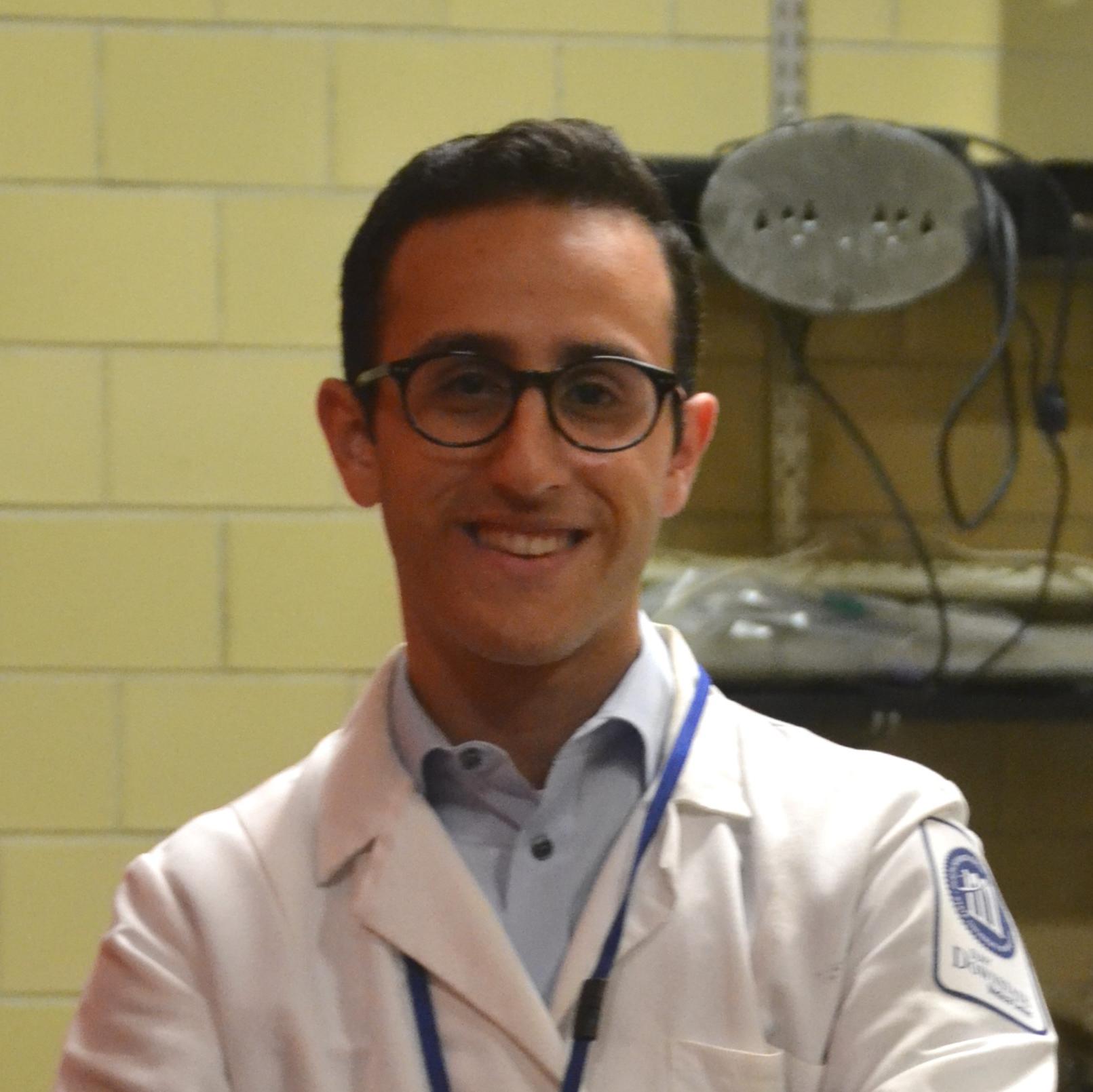Moshe Bedziner
Major: Biology
Summer Internship: SUNY Downstate Medical Center Cerebrovascular Research Laboratory

Pushing an empty cart, Moshe Bedziner walks expertly to a doorway, his footsteps squeaking on the rubber floors of SUNY Downstate’s Basic Science building. He punches in a code, takes a blue face mask and gloves, and twists the doorknob. Inside are hundreds of rats in cylindrical cages, each labeled with a different Principal Investigator’s name. Moshe finds his rats and carefully lifts the cages into his cart.
This past summer, Moshe began interning as a volunteer researcher in Dr. Frank Barone’s Cerebrovascular Research Laboratory. The lab heads, which include Daniel M. Rosenbaum, M.D; Jie Li, M.D., Jin Zhou, M.D., Ph.D; and Carrie Poon, Ph.D are exploring the effects of stroke and vascular cognitive impairment (VCI) on decision-making in rats, and testing certain pharmaceutical drugs for neurogenesis in different stroke and VCI models.
After taking the elevator upstairs, Moshe wheels the cart into the experiment room, where a T-shaped maze stands on a large wooden table. Moshe’s current experiment involves using young, spontaneous hypertensive rats (SHR) as a model for an executive-functioning assay. “In other words,” he explains, “we’re testing these rats on their problem-solving and decision-making abilities.”
The rats, he adds, are temporarily food-deprived to ensure they have sufficient motivation to enter the maze and earn their reward. At a fork in the road, the path on the right leads to three Fruit Loops, while the path on the left leads to a mere quarter of a single Fruit Loop. “Once the rat goes in, it has to make a decision—left or right. Once it turns, it’s stuck with its decision, because we lower the gate down. So essentially we’re teaching it, pick the right side, follow the high-level reward path. And they’re learning.”
By now, it’s the third week of the experiment, and the rats are learning their way around. Pressing start on a stopwatch, Moshe gently drops one snow-colored rat down onto the maze ramp. Pausing for a moment, it sniffs and then turns right. Moshe smiles and quickly slides down one of the gates, and the rat starts nibbling on the fruit loops.
After the training portion of the experiment is completed, Moshe explains, half the rats undergo carotid artery stenosis surgery (“that will reduce blood flow to the forebrain as can occur in cerebrovascular disease and, we believe, will negatively affect their cognition”) while the other half—the control group—undergo “a simple sham surgery for comparison.” After recovery, both groups are tested back in the T-maze to assess their cognitive condition over a 7-week period. “We bring them back into the maze to see if they remember how to go through it the same way, if they remember what they learned. And then we record the percentage of how many make the right decisions.”
After performing perfusion euthanasia on the rats, which involves inducing a humane, painless death but will still help preserve their brains, Moshe and his summer research team examine their stained brain sections under microscopes. “We use immunohistochemistry,” explains Moshe, “to label and determine which cell types die and which fiber tracts lose their insulating myelin coating. These changes occur in human VCI and are very important in the evolution of dementia, but can only be studied systematically and in greater detail using well-characterized animal disease models.” The knowledge gleaned, Moshe says, will help contribute to the ever-increasing literature on brain changes involved in the progression of vascular cognitive impairment.
“I’m also being trained in performing different cerebrovascular surgeries, learning to work with MRI programs, starting to work under the fluorescence microscope and getting to watch newly developed medications being tested. It’s a very cool internship, I’ll admit,” says Moshe. As the youngest researcher in the lab, he’s collaborating closely with the full-time researchers and participating in the same work as first-year SUNY medical students. “Working with Frank is amazing; he has a lot of innovative ideas and is open to new project suggestions. Jie and Carrie are great teachers who are continually showing me the ropes. I’m also working with a neurology resident who has a novel idea involving using a micro-catheter as a method for early stroke intervention, and monitoring post-stroke blood flow using Laser Doppler Flowometry.”
Moshe is grateful to LCM alumnus Dr. Daniel Lax, a friend, for his connection to the lab as well as certain members of the faculty for contributing to his success in this internship. “Drs. Ann Shinar and Danishefsky are great educators. Much of what they taught me was very practical and applicable to my experience here.”


